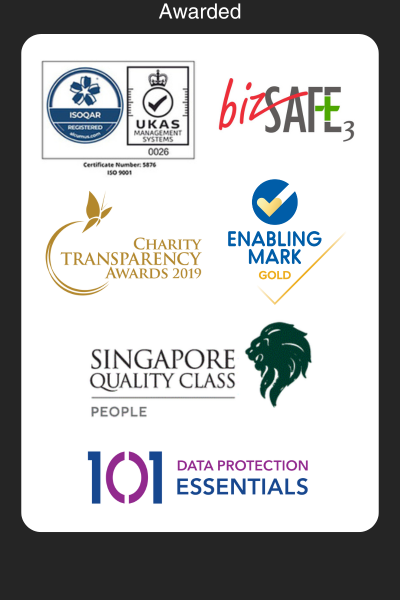“It’s impossible to teach her how to spell!”
“Her handwriting is so messy, all her teachers complain about it!”
“He’s already 10, when will he learn to write neatly?”
“He must be just plain lazy.”
“She’s just not trying hard enough.”
Do these words of complain sound familiar? Have you considered that your child may not be writing badly deliberately? He or she may have dysgraphia.
Dysgraphia is a learning disability that affects writing, which requires a complex set of motor and information processing skills. Dysgraphia makes the act of writing difficult. It can lead to problems with spelling, poor handwriting, and putting thoughts on paper. People with dysgraphia can have trouble organising letters, numbers, and words on a line or page. This can result partly from:
- Visual-spatial difficulties: trouble processing what the eye sees
- Language processing difficulty: trouble processing and making sense of what the ear hears
As with all learning disabilities, dysgraphia is a lifelong challenge, although how it manifests may change over time.
Warning Signs
Just having bad handwriting does not mean a person has dysgraphia. Since dysgraphia is a processing disorder, difficulties can change throughout a lifetime. The following signs can be observed in persons with dysgraphia in different stages of their development.
In Early Writers
- Tight, awkward pencil grip and body position
- Avoiding writing or drawing tasks
- Trouble forming letter shapes
- Inconsistent spacing between letters or words
- Poor understanding of uppercase and lowercase letters
- Inability to write or draw in a line or within margins
- Gets tired quickly while writing
In Young Students
- Illegible handwriting
- Mixture of cursive and print writing
- Saying words out loud while writing
- Concentrating so hard on writing that comprehension of words is missed
- Trouble thinking of words to write
- Omitting or not finishing words in sentences
In Teenagers and Adults
- Trouble organising thoughts on paper
- Trouble keeping track of thoughts already written down
- Difficulty with syntax structure and grammar
- Large gap between written ideas and understanding demonstrated through speech
What Helps?
There are many ways to help a person with dysgraphia achieve success. The strategies fall into the following three key categories.
- Accommodation: providing alternatives to written expressions
- Modification: changing expectations or tasks to minimise or avoid the area of weakness
- Remediation: providing instructions for improving handwriting and writing skills
Each type of strategy should be considered when planning instruction and support. A person with dysgraphia will benefit from help from both specialists and those who are closest to the person. Finding the most beneficial type of support is a process of trying different ideas and openly exchanging thoughts on what works best.
Although teachers and employers are required by law to make “reasonable accommodations” for individuals with learning disabilities, they may not be aware of how to help. Speak to them about dysgraphia and explain the challenges faced as a result of this learning disability.
Here are examples of how to teach individuals with dysgraphia to overcome some of their difficulties with written expressions.
Early Writers
Always be patient and positive, encourage practice, and praise effort. Becoming a good writer takes time and practice.
- Use paper with raised lines for a sensory guide to staying within the lines.
- Try different pens and pencils to find one that’s most comfortable.
- Practice writing letters and numbers in the air with big arm movements to improve motor memory of these important shapes. Also practice letters and numbers with smaller hand or finger motions.
- Encourage proper grip, posture, and paper positioning for writing. It’s important to reinforce this early as it’s difficult for students to unlearn bad habits.
- Use multi-sensory techniques for learning letters, shapes, and numbers. For example, speaking through motor sequences, such as “b” is “big stick down, circle away from my body.”
- Introduce a word processor on a computer early; however do not eliminate handwriting for the child. While typing can make it easier to write by alleviating the frustration of forming letters, handwriting is a vital part of a person’s ability to function.
Young Students
Encourage practice through low-stress opportunities for writing. This might include writing letters or in a diary, making household lists, or keeping track of sports teams.
- Allow use of print or cursive – whichever is more comfortable.
- Use large graph paper for math calculation to keep columns and rows organised.
- Allow extra time for writing assignments.
- Begin writing assignments creatively with drawing, or speaking ideas into a tape recorder
- Alternate focus of writing assignments – put the emphasis on some for neatness and spelling, others for grammar or organisation of ideas.
- Explicitly teach different types of writing – expository and personal essays, short stories, poems, etc.
- Do not judge timed assignments on neatness and spelling.
- Have students proofread work after a delay – it’s easier to see mistakes after a break.
- Help students create a checklist for editing work – spelling, neatness, grammar, syntax, clear progression of ideas, etc.
- Encourage use of a spell checker – speaking spell checkers are available for handwritten work.
- Reduce amount of copying; instead, focus on writing original answers and ideas.
- Have student complete tasks in small steps instead of all at once.
- Find alternative means of assessing knowledge, such as oral reports or visual projects.
Teenagers and Adults
Many of these tips can be used by all age groups. It is never too early or too late to reinforce the skills needed to be a good writer.
- Provide tape recorders to supplement note taking and to prepare for writing assignments.
- Create a step-by-step plan that breaks writing assignments into small tasks (see below).
- When organising writing projects, create a list of keywords that will be useful.
- Provide clear, constructive feedback on the quality of work, explaining both the strengths and weaknesses of the project, commenting on the structure as well as the information that is included.
- Use assistive technology such as voice-activated software if the mechanical aspects of writing remain a major hurdle.
This article is brought to you by National Center for Learning Disabilities. For more information on the organisation or the article, please visit http://www.ncld.org


